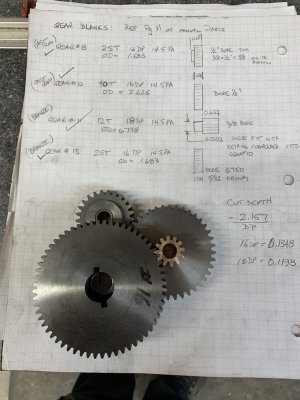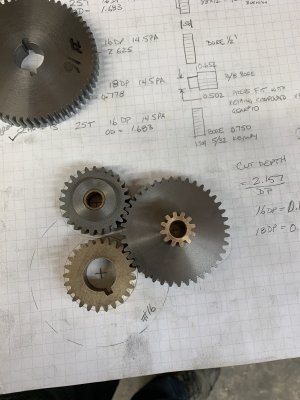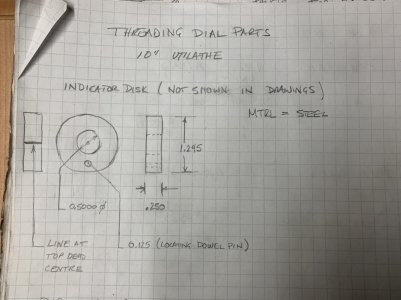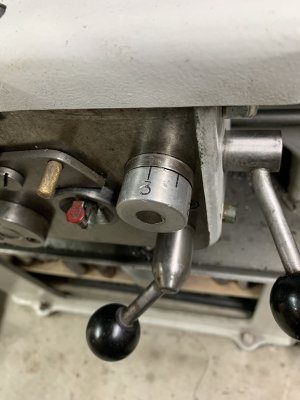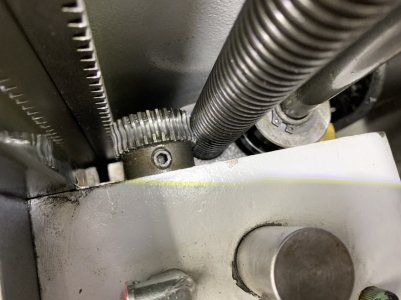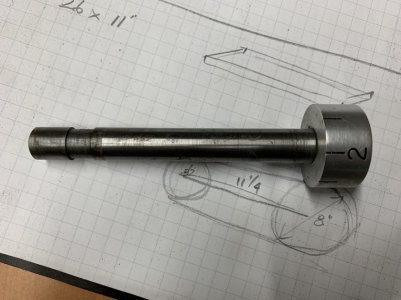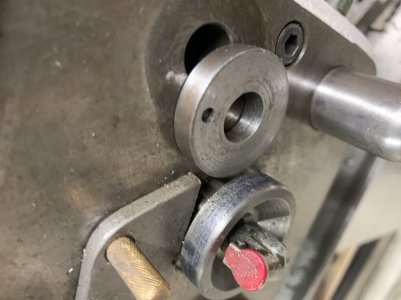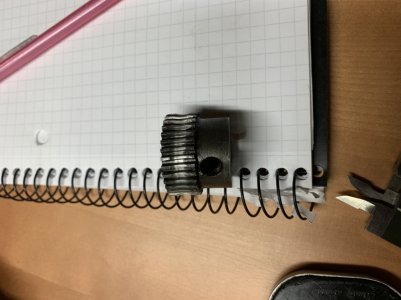Today was awesome and I needed to resurrect the old thread to add some information. Since the big rebuild I have been waiting on making a few more gears and just getting things dialled right in. When things are going well I can get the lathe to less than 0.0005” over a foot or more, and yes I can be picky - hahahahaha -
One thing that was bothering me was that when operating back from the headstock, near where you might start a cut on a longer shaft type thing I noticed that when I started to advance the saddle of the lathe it would slightly lift or deflect at the front. I thought this very odd - especially since I still was getting decent cut results - most of the time.
The second thing that bugged me was the play when advancing the apron. If you were threading the hand wheel would sometimes rock back and forth making little bumps.
Before heading to work I thought to just tear things apart and take some measurements- then the epiphany!!
when rebuilding the lathe apron there is a plate (page 13 part number 3) “Gib Plate” but nothing more is referenced.
It is indicated by the red arrow:

So with Spidey Senses tingling I did some measuring. Well- Ha! One side (back side) was 0.614” and the front was 0.624 - Interesting— so then I measured under the lathe from the machined surface of apron to the lathe bed and got an average of 0.610 with a bit of wear in spots but not bad. So “GIB PLATE” - light bulbs all coming on —— I loosened off the 4 Allen Head bolts and adjusted the GIB PLATE to be 0.612” front and back. Thinking 0.002” clear would be OK.
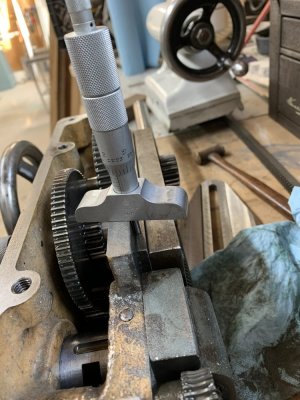
Then comes the second light bulb - way back when,
@YYCHobbyMachinist bought a lathe in Ontario and
@Chicken lights and I transported and shipped parts all over. One thing I kept back was the rack for the pinion that the hand wheel drives to advance the apron. Couldn’t be the same .... IT WAS !!! Ya baby - and it was pristine after an hour of scrubbing - compared to the one I had original on the lathe. Also the original had a bum retaining screw hole that would loosen from time to time - note the wear and raised edges:
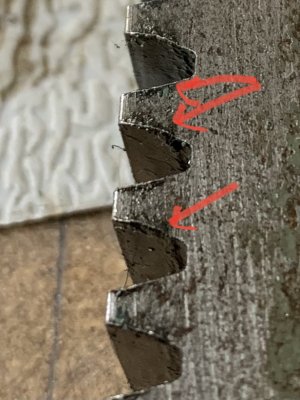
So with all that changed out I adjusted the locking nuts on the Rear Saddle Gib and checked the fit of everything else - WOOO HOO! Less than 1/2 thou deflection if that and the apron was running super smooth! Still some play in the hand wheel but way way less - Excellent!!!
Here is a diagram that may help with clarity. The rear saddle Gib is mentioned in the manual but nothing about the front one.
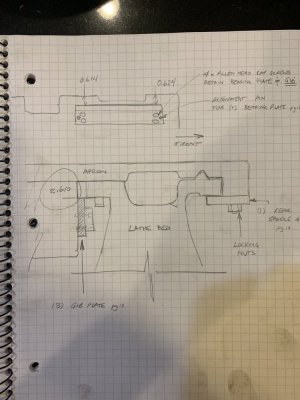
Super cool - grabbed some other measurements for future projects - like a ball turner
🙂. Since my other posting about black nuts was well received I figure a brass ball maker can’t go wrong
🙂.








